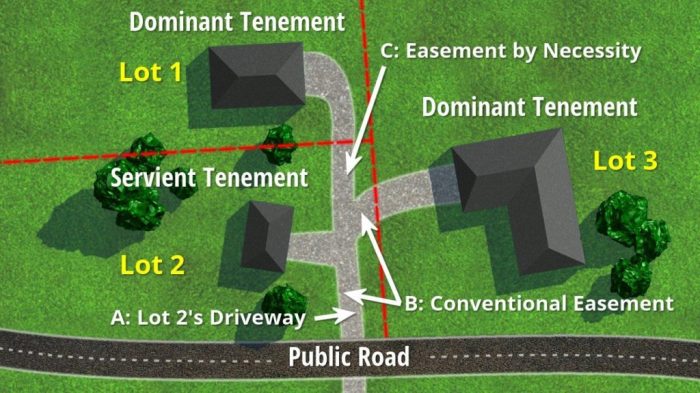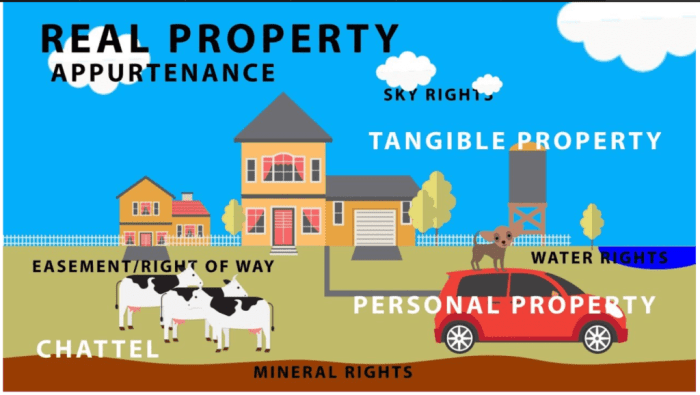Examples of appurtenances in real estate offer a fascinating glimpse into the world of property ownership. Appurtenances, those essential fixtures and accessories that accompany a property, play a crucial role in shaping its value, desirability, and marketability. From mundane items like light fixtures to grand amenities such as swimming pools, appurtenances add value and convenience to real estate investments.
This comprehensive guide delves into the diverse types of appurtenances commonly found in real estate transactions, exploring their purpose, function, and legal implications. We will examine the methods used to value appurtenances and their significance in determining a property’s worth.
Furthermore, we will uncover the legal considerations surrounding appurtenances, ensuring that buyers and sellers are fully informed about their rights and responsibilities.
Types of Appurtenances

Appurtenances are legal rights or privileges that pass with the transfer of ownership of real property. They are typically defined in a deed or other legal document and can include a wide range of items, such as easements, fixtures, and water rights.
| Appurtenance Type | Purpose | Function | Examples |
|---|---|---|---|
| Easement | Right to use another person’s property for a specific purpose | Allows access to a road, utility, or other property | Right-of-way, utility easement, conservation easement |
| Fixture | Personal property that is permanently attached to real property | Provides functionality and value to the property | Appliances, built-in furniture, lighting fixtures |
| Water right | Right to use water from a specific source | Provides access to water for irrigation, drinking, or other purposes | Riparian rights, well rights, surface water rights |
| Mineral rights | Right to extract minerals from a property | Provides access to valuable resources such as oil, gas, or coal | Oil and gas leases, mining rights |
Legal Implications of Appurtenances

Appurtenances have significant legal implications in real estate contracts. They are typically transferred from seller to buyer along with the deed to the property, and their rights and obligations are governed by the terms of the deed and applicable law.
- Transfer of Appurtenances:Appurtenances are typically transferred from seller to buyer along with the deed to the property. The deed should clearly identify the appurtenances that are being transferred.
- Legal Disputes:Disputes over appurtenances can arise when there is a disagreement about the rights or obligations associated with the appurtenance. For example, a dispute may arise over the scope of an easement or the ownership of water rights.
Legal Considerations for Appurtenances:
- Ensure Clear Documentation:The deed should clearly identify the appurtenances that are being transferred and their rights and obligations.
- Conduct Due Diligence:Buyers should conduct due diligence to verify the existence and scope of any appurtenances before purchasing a property.
- Seek Legal Advice:If there is any uncertainty about the rights or obligations associated with an appurtenance, it is advisable to seek legal advice.
Valuation of Appurtenances

The value of an appurtenance can be determined using a variety of methods, including:
- Comparable Sales Approach:This approach involves comparing the sale prices of similar properties with similar appurtenances.
- Cost Approach:This approach involves estimating the cost of replacing or reproducing the appurtenance.
- Income Approach:This approach involves estimating the income that the appurtenance generates or the value that it adds to the property.
Factors that Influence the Value of an Appurtenance:
- Type of Appurtenance:The type of appurtenance can affect its value. For example, an easement may be more valuable than a fixture.
- Location:The location of the appurtenance can affect its value. For example, an easement that provides access to a desirable location may be more valuable than an easement that provides access to a less desirable location.
- Scope of Rights:The scope of rights associated with the appurtenance can affect its value. For example, an easement that provides unlimited access may be more valuable than an easement that provides limited access.
Step-by-Step Guide to Valuing Appurtenances:
- Identify the appurtenance and its rights and obligations.
- Gather data on comparable sales, costs, and income.
- Select the appropriate valuation method.
- Apply the valuation method to determine the value of the appurtenance.
- Review and verify the valuation.
Importance of Appurtenances in Real Estate Transactions

Appurtenances can have a significant impact on the value, desirability, and marketability of a property.
| Positive Impacts | Negative Impacts |
|---|---|
| Increased value | Decreased value |
| Enhanced desirability | Reduced desirability |
| Improved marketability | Reduced marketability |
| Provides access to valuable resources | Restricts use of property |
Examples of Positive Impacts:
- An easement that provides access to a lake can increase the value of a property.
- A water right can make a property more desirable for agricultural purposes.
- Mineral rights can provide a source of income for the property owner.
Examples of Negative Impacts:
- An easement that restricts the use of a property can decrease its value.
- A water right that is limited in scope can reduce the desirability of a property.
- Mineral rights that are leased to a mining company can restrict the use of the property.
Question Bank: Examples Of Appurtenances In Real Estate
What are the most common types of appurtenances found in real estate?
Common types of appurtenances include light fixtures, appliances, window treatments, landscaping, fences, and swimming pools.
How do appurtenances affect the value of a property?
Appurtenances can increase the value of a property by enhancing its functionality, desirability, and marketability.
What are the legal implications of appurtenances in real estate contracts?
Appurtenances are typically transferred from seller to buyer as part of the property sale, but it’s important to review the contract carefully to ensure that all intended appurtenances are included.